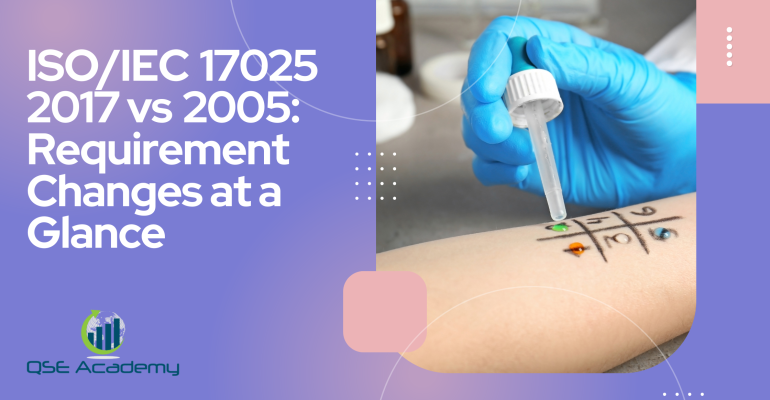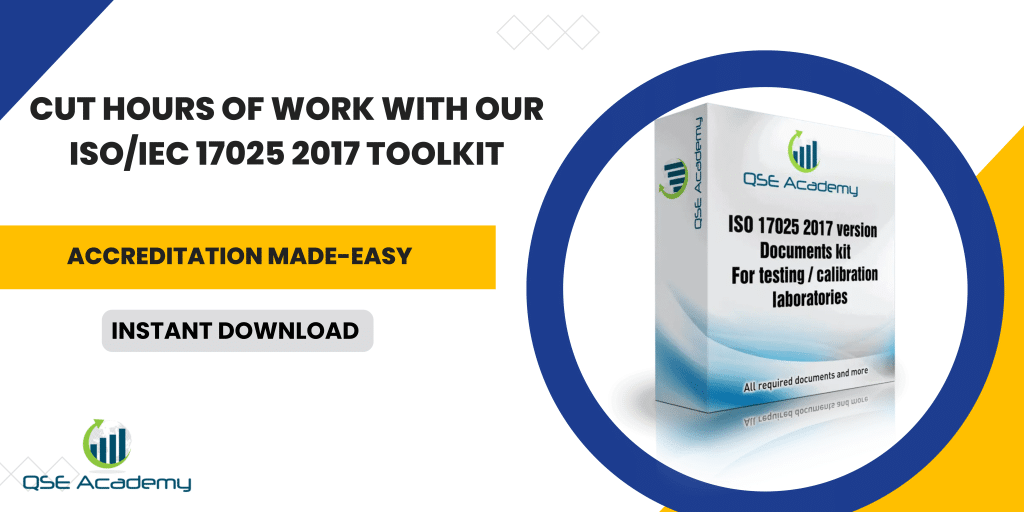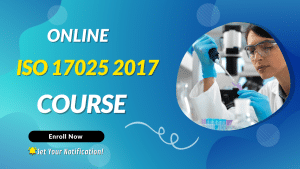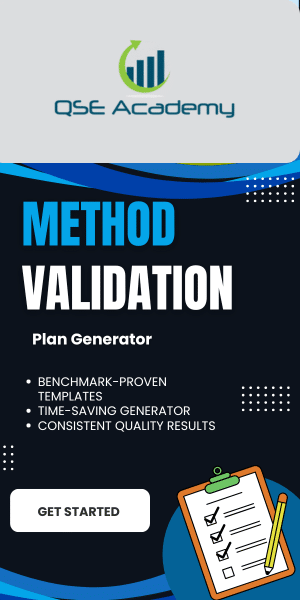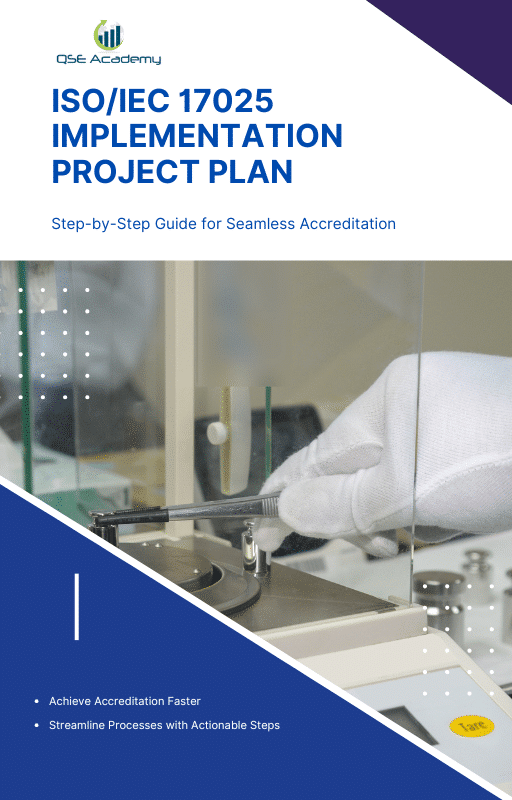ISOIEC 17025 2017 vs 2005 Requirement Changes at a Glance
Last Updated on October 13, 2025 by Melissa Lazaro
Understanding the ISO/IEC 17025:2017 Update in Plain Terms
When ISO updated 17025 in 2017, a lot of labs felt blindsided. The 2005 version had been the standard for over a decade—everyone knew where they stood. Then suddenly, assessors started asking about “risk-based thinking,” “impartiality,” and “decision rules.”
Here’s the thing: ISO wasn’t trying to make life harder. The 2017 update was about modernizing how labs think and operate. Technology had evolved, management systems had shifted, and ISO needed to keep up.
But I get it—on paper, the new version looks like a completely different language. In reality, the principles haven’t changed as much as the approach has. It’s less about rigid procedures and more about demonstrating that your system actually works—reliably, consistently, and confidently.
When I work with labs on their transition, I always say this:
You don’t need to rebuild everything. You just need to understand what changed, what stayed the same, and where to focus your effort.
By the end of this guide, you’ll know exactly that. You’ll see the differences between ISO/IEC 17025:2005 and 2017—side by side—and understand what they mean for your lab in practical terms.
Why the ISO/IEC 17025 Standard Was Revised
Every revision of an ISO standard has a story behind it—and ISO/IEC 17025:2017 is no exception.
By the time 2017 came around, the 2005 version was showing its age. Labs were moving toward digital data, global collaborations were increasing, and quality management principles had evolved. The old structure simply didn’t fit how modern labs operated anymore.
Here’s what drove the change:
1. Alignment with Modern Management Systems.
ISO wanted to bring 17025 in line with the high-level structure (Annex SL) used in other standards like ISO 9001:2015. That made it easier for labs already certified under multiple systems to integrate everything under one roof.
2. Emphasis on Risk-Based Thinking.
The world had shifted from “follow the rule” to “understand the risk.” ISO wanted labs to anticipate potential issues before they affected results. Instead of listing dozens of mandatory procedures, the standard now expects labs to apply risk-based reasoning throughout their operations.
3. Recognition of Impartiality and Competence.
The new version pushes labs to prove that their results aren’t influenced by bias, conflicts of interest, or poor competence management. It’s about trust—clients and regulators want results that stand up to scrutiny anywhere in the world.
4. Flexibility for Different Types of Labs.
Not all labs are big, formal operations. The 2017 version acknowledges that. It gives smaller or specialized labs more freedom to design systems that fit their scale and structure, as long as they meet the same intent.
When ISO says the 2017 edition is “less prescriptive,” this is what they mean: fewer boxes to tick, more freedom to design a system that genuinely works.
Pro Tip: If your lab already values consistency, impartiality, and risk awareness, you’re closer to 2017 compliance than you think. The revision didn’t change the destination—just the roadmap to get there.
Key Structural Differences – From Clauses to Flexibility
The first thing you notice when comparing the 2005 and 2017 versions of ISO/IEC 17025 is that the structure looks completely different.
In 2005, the standard was split neatly into two main parts — Management Requirements and Technical Requirements. It felt familiar to anyone used to ISO-style systems: heavy on documentation, clearly numbered, and pretty prescriptive.
Then came 2017 — and everything shifted. The structure now follows ISO’s Annex SL framework, the same model used in ISO 9001:2015. It’s designed to help organizations think in terms of processes rather than isolated clauses.
Here’s what that means in plain terms:
1. Less About “What to Write,” More About “How You Work.”
The old version told you what documents to keep. The new version cares more about whether your processes work and whether they’re consistently applied. You still need documented information—but only where it adds real value.
2. Flexibility in Management System Options.
The 2017 version gives labs two clear choices:
-
Option A: Follow ISO 17025’s management clauses directly.
-
Option B: Integrate your system with ISO 9001.
That means if your organization already runs a certified ISO 9001 QMS, you don’t need duplicate systems—you can merge them seamlessly.
3. Clauses Restructured Around the Lab’s Workflow.
The clauses now align better with how labs actually operate, starting with impartiality, followed by structure, resources, process, and management system. It’s more intuitive and easier to apply in daily operations.
4. Greater Emphasis on Outcomes.
The focus has shifted from ticking off compliance checklists to demonstrating results. ISO wants to see that your lab produces valid, impartial, and consistent data—not just that you’ve written a procedure for it.
In short, ISO 17025:2017 replaced rigid structure with intelligent flexibility. It allows your lab to design a management system that fits your size, complexity, and risks—without sacrificing credibility.
Pro Tip: If your lab’s documentation feels “lighter” after transitioning, that’s not a bad sign. It means you’re doing it right—replacing bureaucracy with purpose.
Major Requirement Changes – Side-by-Side at a Glance
Let’s cut through the noise. Everyone wants to know — what actually changed between ISO/IEC 17025:2005 and the 2017 version?
Here’s the quick view, followed by what it means in practice.
| Area | 2005 Edition | 2017 Edition | Practical Impact for Labs |
|---|---|---|---|
| Management System | Required a detailed quality manual with specific procedures. | Gives two options: follow ISO 17025 clauses directly (Option A) or integrate with ISO 9001 (Option B). | Labs can simplify documentation or merge systems for efficiency. |
| Structure | Split into “Management” and “Technical” sections. | Follows process-based layout (impartiality → structure → resources → process → management system). | Easier to map requirements to real lab workflows. |
| Risk-Based Thinking | Not mentioned. | Core concept applied throughout the standard. | Encourages prevention and smarter decision-making instead of reactive corrections. |
| Impartiality & Confidentiality | Touched briefly in ethics sections. | Expanded into stand-alone clauses (4.1 & 4.2). | Requires active identification and control of impartiality risks and confidentiality breaches. |
| Decision Rules | Not required. | Mandatory when issuing statements of conformity. | Labs must define how measurement uncertainty influences pass/fail results. |
| Competence & Training | Focused on qualifications. | Focuses on ongoing competence evaluation. | Training now needs proof of performance, not just attendance. |
| Measurement Uncertainty | Emphasized mainly for calibration. | Applies broadly to testing and calibration. | Testing labs now need clearer uncertainty evaluation. |
| Document Control | Strict prescriptive requirements. | Flexible—still controlled, but labs can choose format. | Easier to manage electronic records and digital QMS tools. |
| Complaints & Nonconformities | Separate, procedural clauses. | Streamlined under risk-based improvement. | Simplifies root-cause and corrective-action workflows. |
| Use of IT & Digital Records | Not addressed. | Recognizes electronic data and information management systems. | Digital results and e-signatures are now acceptable evidence. |
These changes reflect a larger shift in mindset—from compliance to competence, from paperwork to performance.
In the past, assessors focused on whether you had a procedure.
Now, they care more about whether your procedure actually ensures valid results.
The labs that adjusted fastest were the ones that saw this as an opportunity to streamline. They stopped writing for auditors and started documenting for themselves.
Pro Tip: Use this table as a checklist. Mark which areas your lab already covers and which need updates. It’s one of the fastest ways to plan your transition work realistically.
New Concepts Introduced in ISO/IEC 17025:2017
If ISO/IEC 17025:2005 felt like a rulebook, the 2017 version feels more like a philosophy.
It doesn’t just tell you what to do—it wants you to understand why you do it. Several new concepts were introduced to make labs think strategically rather than mechanically. Let’s unpack the most important ones.
1. Risk-Based Thinking
This is the backbone of the 2017 version. Instead of waiting for nonconformities to happen, labs are expected to identify potential risks and opportunities before they impact results.
You don’t need a complex “risk register.” Even a simple list or discussion record can show assessors that your lab actively thinks about risks in areas like impartiality, equipment reliability, or data security.
In practice:
A calibration lab might identify “equipment drift” as a risk, then plan periodic checks between calibrations. That simple habit fulfills the intent of risk-based thinking.
2. Impartiality and Confidentiality
These aren’t just ethics statements anymore—they’re operational requirements. Labs must show how they evaluate impartiality risks and ensure that client data remains protected.
Assessors will look for evidence of risk evaluation—like a form or meeting note—not just a paragraph in a manual.
3. Decision Rules
A completely new addition, this one often confuses labs. Whenever you issue statements of conformity (like “Pass” or “Fail”), you must now define how measurement uncertainty affects those decisions.
It’s about transparency: clients should know whether your results account for uncertainty margins or not.
4. Competence Validation
The old standard was satisfied with training records and resumes. The 2017 version wants proof of competence in action. That means ongoing performance monitoring, witnessing, or proficiency testing—not just one-time qualification.
5. Digitalization and Electronic Records
ISO finally caught up with the digital age. Electronic records, LIMS systems, and digital approvals are now recognized as valid evidence—so long as they’re controlled. This gives labs flexibility to modernize without worrying about “paper-only” compliance.
Together, these new concepts push labs toward smarter, more efficient systems—ones that reflect how science and technology actually work today.
Pro Tip: The fastest way to internalize these changes? Build them into your internal audits and training programs. That way, they become part of how your lab operates—not just words in a manual.
Common Misunderstandings About the New Version
When ISO/IEC 17025:2017 was first released, I started hearing the same worries over and over again from lab managers:
“Do we need to rewrite everything?”
“Does this mean we need a brand-new system?”
“Are audits going to be harder now?”
The truth? Most of those fears come from misunderstanding what the new version actually expects. Let’s clear up the biggest misconceptions I’ve seen in the field.
Misunderstanding #1: “We need a brand-new Quality Manual.”
Not necessarily. The 2017 version doesn’t require a Quality Manual at all. If your current manual still helps communicate your system, keep it. If it’s redundant, simplify or merge it into your procedures. The key is clarity, not format.
In practice: Some labs now use a short “Quality Overview” document—just 3–4 pages explaining their system structure. Assessors appreciate the simplicity.
Misunderstanding #2: “We must rewrite every procedure.”
No. Update only where the intent of the standard changed—like impartiality, competence, and risk-based thinking. If your existing procedures still work, leave them alone. Overhauling everything wastes time and confuses your staff.
Misunderstanding #3: “Risk management means a big risk register.”
Not at all. ISO 17025:2017 doesn’t require a formal risk register. It simply wants you to show that you consider risks in your decision-making. Even a quick risk discussion recorded in a meeting note or email thread meets the intent.
Misunderstanding #4: “The 2017 version is harder to comply with.”
Actually, it’s easier—when applied properly. The new version gives you flexibility to design systems that fit your lab. It’s less about paperwork and more about proof that your system works effectively.
Misunderstanding #5: “Assessors expect perfection under the new version.”
No assessor expects a flawless system—they expect a functional one. ISO 17025:2017 is built on the idea of continuous improvement. That means showing how you identify issues, act on them, and learn from them.
When labs understand these truths, the 2017 version stops feeling like a burden and starts feeling like an upgrade.
It’s not about doing more—it’s about doing what matters better.
Pro Tip: If your team’s still nervous, host a “myth-busting” meeting. Go through these misconceptions one by one. It’s a quick way to build confidence before your next audit.
Transition Strategy – How to Move from 2005 to 2017 Smoothly
Transitioning from ISO/IEC 17025:2005 to the 2017 version can feel overwhelming at first glance. But with the right plan, it’s completely manageable. I’ve guided labs through this process dozens of times, and the same principle always applies: don’t try to do everything at once—do the right things in the right order.
Here’s a roadmap that works:
Step 1: Start with a Gap Analysis.
Before changing anything, figure out exactly what’s missing. Compare your current system against each 2017 clause using a structured Gap-Analysis Template. Identify what’s compliant, partially compliant, or missing entirely.
→ This gives you a focused starting point instead of chasing vague “updates.”
Step 2: Update Core Procedures First.
The biggest changes in 2017 revolve around impartiality, risk, competence, and decision rules. Update those first. These are high-impact areas that assessors always review closely during transition audits.
Step 3: Train Your Team.
Most transition challenges don’t come from documentation—they come from people not understanding what changed. Hold short, focused sessions explaining how the new requirements affect daily work. Keep it practical, not theoretical.
Step 4: Conduct a Trial Internal Audit.
Audit your lab against the 2017 version before the official assessment. Treat it like a dress rehearsal. This helps identify gaps early and gives your team a confidence boost.
Step 5: Review Progress in a Management Review.
Your management review should include the transition plan, completed updates, and outstanding actions. This shows leadership involvement—something assessors expect to see under 2017.
Step 6: Schedule Your Transition Audit Early.
Accreditation bodies appreciate proactive planning. Book your audit once your internal checks are complete and all major gaps are closed. Having a clear transition log or project tracker makes the whole process smoother.
Step 7: Keep Evidence Organized.
Document every step—gap analysis results, training attendance, revised procedures, internal audit reports. These records tell assessors, “We didn’t guess our way through this. We managed it.”
Labs that follow this approach don’t just survive their transition—they come out of it stronger. Their systems are leaner, their staff more confident, and their assessors walk away impressed.
Pro Tip: Assign one person as your “Transition Coordinator.” Having a single point of accountability keeps everything on track and prevents overlap or confusion.
FAQs – ISO/IEC 17025:2017 vs 2005
When labs start preparing for transition, a few questions always come up. These are the ones I hear most often — and the answers that keep the process grounded in reality.
Q1: Is ISO/IEC 17025:2005 still valid?
No. Once accreditation bodies fully adopted the 2017 version, the 2005 standard was officially withdrawn. If your lab is still operating under 2005 requirements, you’ll need to update your system before your next reassessment or surveillance visit.
Q2: Do we have to go through a full re-accreditation?
Not usually. Most accreditation bodies treat the transition as a continuation — not a restart. You’ll go through a transition assessment, where auditors verify that your lab meets the 2017 requirements. If you’ve maintained accreditation continuously and managed the change properly, your existing status carries forward.
Q3: What are the main areas assessors focus on during transition audits?
Assessors typically pay close attention to:
-
Impartiality and risk management (new emphasis areas)
-
Decision rules and uncertainty evaluation (new requirements)
-
Competence and performance monitoring (broader expectations)
-
Documented information control (more flexible, but must still be traceable)
These areas reveal whether your lab genuinely understands and applies the 2017 mindset—not just the words.
Q4: Can small labs handle ISO 17025:2017 without extra resources?
Absolutely. The 2017 version was designed to be scalable. Small labs can meet the same intent using simpler methods—as long as they can prove effectiveness. For example, you don’t need elaborate risk matrices; a short discussion log or summary of preventive actions can be enough.
Q5: Do we still need a Quality Manual?
No—it’s optional now. But if you already have one that helps describe your system clearly, keep it. Assessors care more about clarity and consistency than about format.
Pro Tip: If your team’s unsure about certain clauses, print the side-by-side comparison table (from Section 4) and use it as a discussion guide during internal training. It’s one of the easiest ways to build understanding and confidence across departments.
Embracing the 2017 Version as an Opportunity, Not an Obligation
For many labs, the transition from ISO/IEC 17025:2005 to 2017 felt intimidating at first. But after working with dozens of teams through it, I can tell you—this revision was never meant to make things harder. It was meant to make them smarter.
The 2017 version gives you the freedom to design a management system that actually fits your lab. It rewards consistency, clarity, and competence—not paperwork volume. It aligns your processes with real-world risks, digital workflows, and modern expectations.
In short, it’s less about proving compliance and more about proving control.
When labs embrace that mindset, everything changes. Internal audits feel more meaningful. Procedures become easier to follow. Assessors see evidence of a living, well-managed system—not one built just to pass an audit.
If your lab is still in the middle of the transition, take a breath—you’re already on the right path by learning what changed. Use the side-by-side comparison from this guide as your starting point, and focus your updates where they’ll make the biggest impact.
And if you want a faster, simpler way to do it, we’ve got you covered. At QSE Academy, we’ve helped hundreds of labs transition to ISO/IEC 17025:2017 confidently through:
-
Complete ISO/IEC 17025:2017 Documentation Packages,
-
Ready-to-use Comparison & Transition Checklists, and
-
Consulting Support to customize everything to your lab’s workflow.
Your next step: Download our ISO/IEC 17025:2017 vs 2005 Comparison Guide or book a quick consultation. You’ll get clarity, direction, and expert insight—so your transition becomes a growth opportunity, not an obstacle.
I hold a Master’s degree in Quality Management, and I’ve built my career specializing in the ISO/IEC 17000 series standards, including ISO/IEC 17025, ISO 15189, ISO/IEC 17020, and ISO/IEC 17065. My background includes hands-on experience in accreditation preparation, documentation development, and internal auditing for laboratories and certification bodies. I’ve worked closely with teams in testing, calibration, inspection, and medical laboratories, helping them achieve and maintain compliance with international accreditation requirements. I’ve also received professional training in internal audits for ISO/IEC 17025 and ISO 15189, with practical involvement in managing nonconformities, improving quality systems, and aligning operations with standard requirements. At QSE Academy, I contribute technical content that turns complex accreditation standards into practical, step-by-step guidance for labs and assessors around the world. I’m passionate about supporting quality-driven organizations and making the path to accreditation clear, structured, and achievable.

